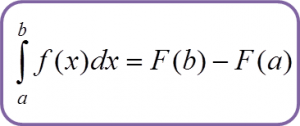3.4a Definite Integral of f(x) from x=a to x=b

Example:
Evaluate each of the following.
(a)∫0−1(3x2−2x+5)dx(b)∫20(2x+1)3dx
Solution:
(a)∫0−1(3x2−2x+5)dx=[3x33−2x22+5x]0−1=[x3−x2+5x]0−1=0−[(−1)3−(−1)2+5(−1)]=0−(−1−1−5)=7(b)∫20(2x+1)3dx=[(2x+1)44(2)]20=[(2x+1)48]20=[(2(2)+1)48]−[(2(0)+1)48]=6258−18=78

























